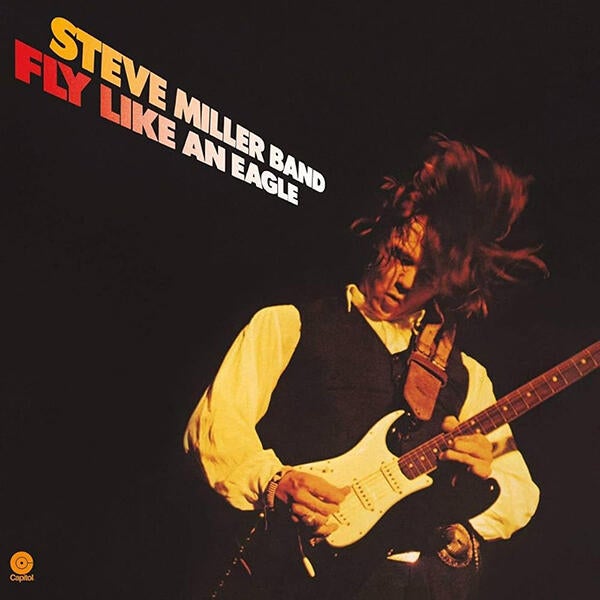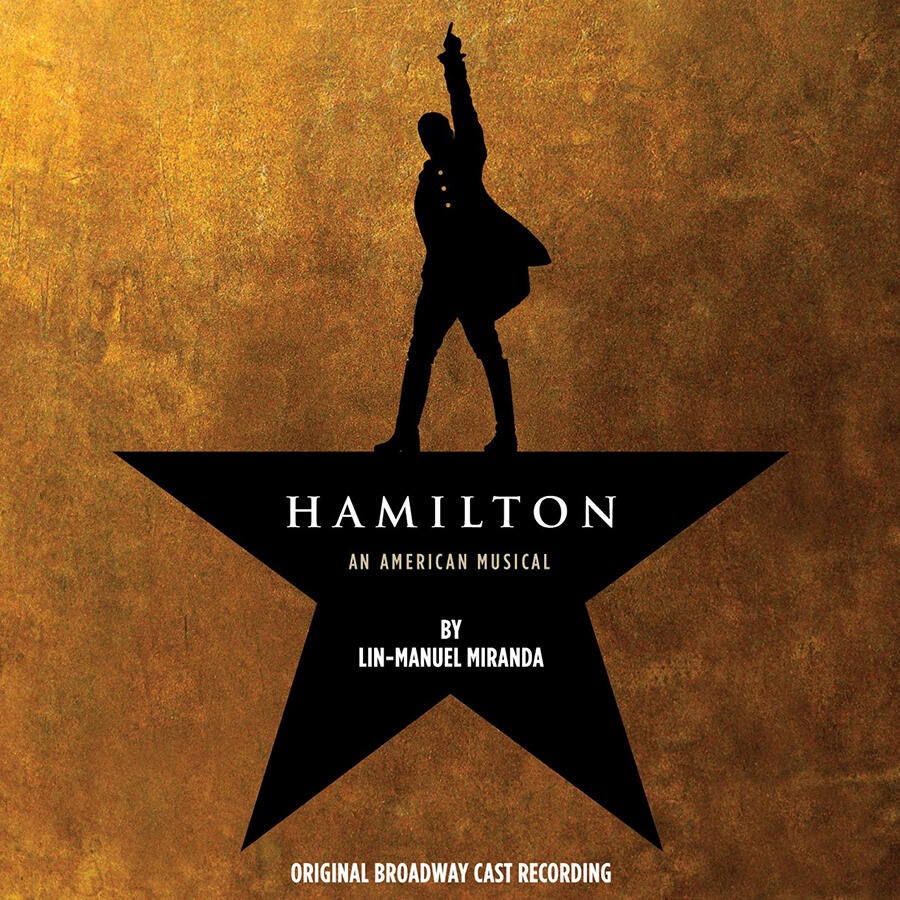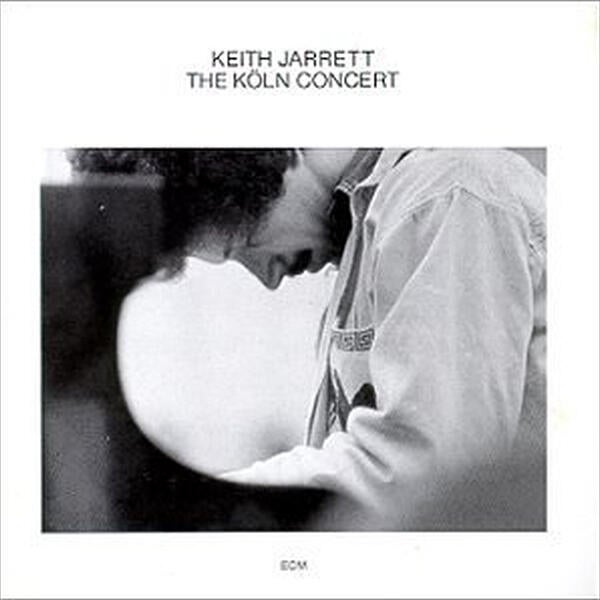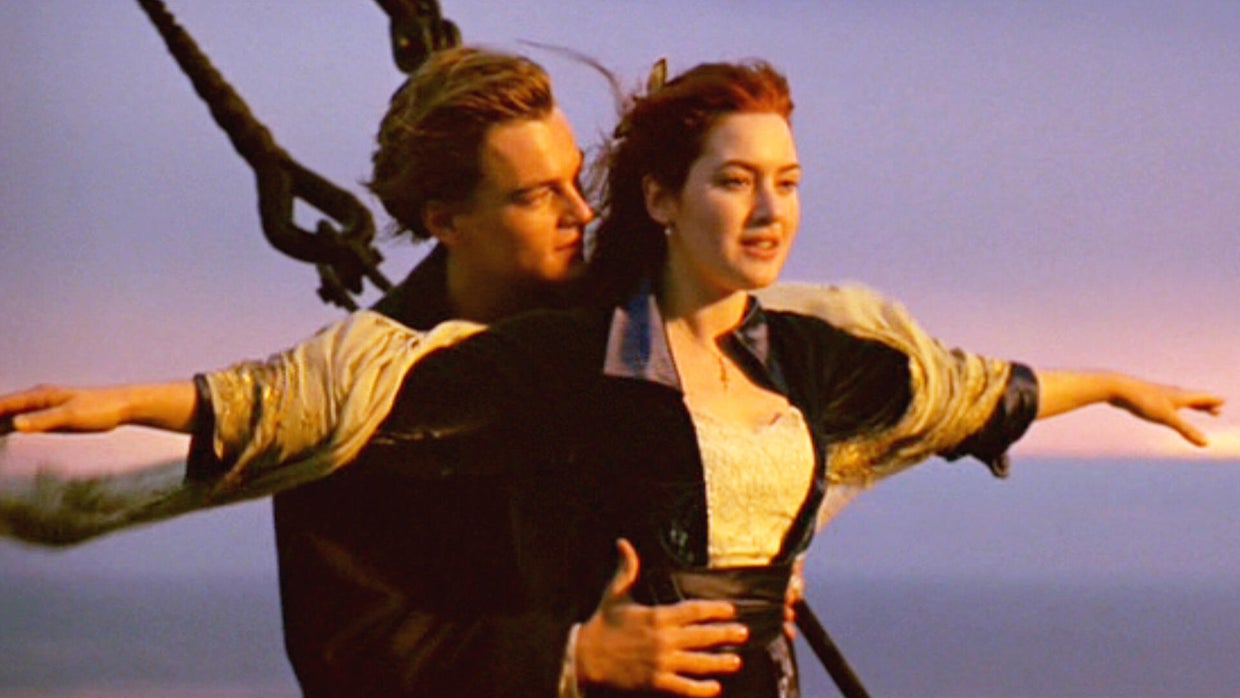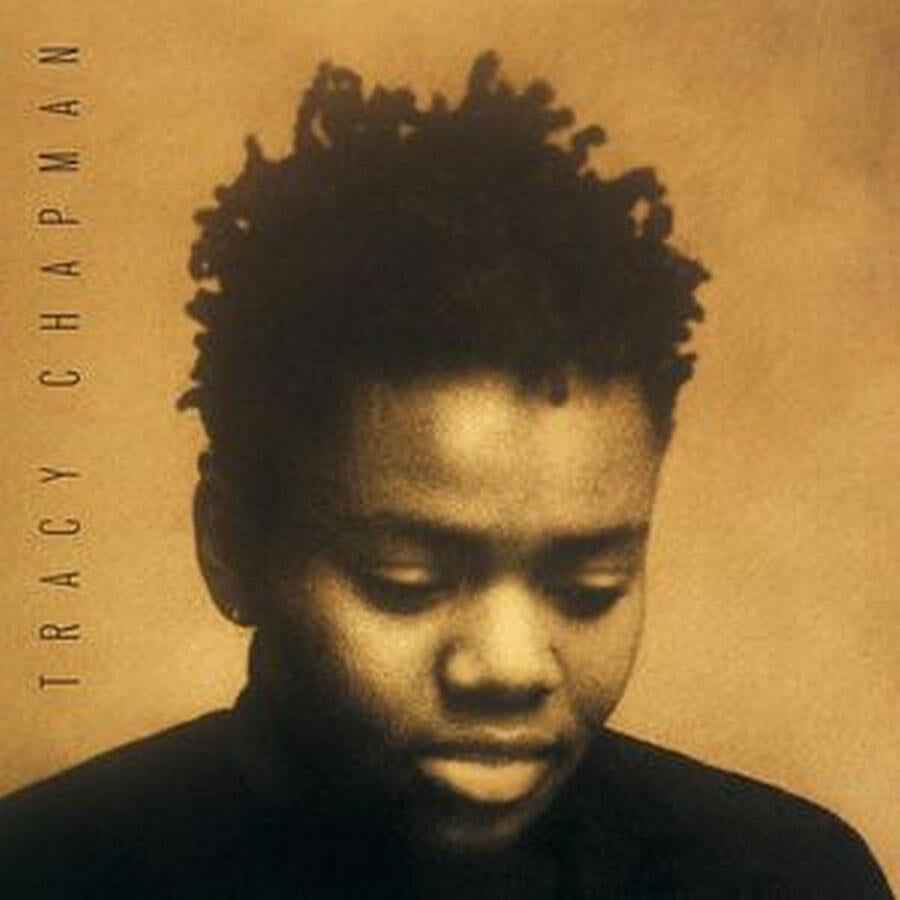On Wednesday the Library announced 25 audio recordings that are being inducted to the Registry. This year’s additions, representative of America’s artistic, cultural and historic heritage, encompass a vast range of genres, from jazz, rock, pop, folk, country, Latin, Broadway and rap, to radio, spoken word, and comedy.
Also selected this year: Helen Reddy’s anthem “I Am Woman”; the debut albums from the rock band Chicago and singer-songwriter Tracy Chapman; “Sweet Georgia Brown” by Brother Bones & His Shadows; “Happy Trails” by singing cowboy Roy Rogers and Dale Evans; “The Kӧln Concert,” a landmark recording by jazz pianist Keith Jarrett; “My Life,” a heartbreaking work of musical autobiography by Mary J. Blige; music from the sandbox game Minecraft; and Don Rickles’ standup comedy album, “Hello Dummy!” The oldest of this year’s entries is the Hawaiian Quintette’s recording of “Aloha ‘Oe,” dating from 1913.
One iconic addition is barely six seconds long: Brian Eno’s chime heard when booting up Windows 95.
Getty Images/CBS News
The recordings added this year bring the number of titles on the Registry to 675 – just a portion of Library of Congress’ recorded sound collection of nearly four million items.
Robbin Ahrold, chair of the National Recording Preservation Board, called this year’s additions “an honor roll of superb American popular music from the wide-ranging repertoire of our great nation, from Hawaii to Nashville, from iconic jazz tracks to smash Broadway musicals, from Latin superstars to global pop sensations – a parade of indelible recordings spanning more than a century.”
More than 2,600 recordings were nominated by the public this year, with the album “Chicago Transit Authority” topping the list.
Read about this year’s 25 additions to the Library of Congress’ National Recording Registry and listen to audio samples below — and find out how you can nominate titles to be added to the Registry.
2025 National Recording Registry additions (in alphabetical order):
“Aloha ‘Oe (Farewell To Thee)” by the Hawaiian Quintette (1913)
The Hawaiian folk song “Aloha ‘Oe,” penned by Princess Liliʻuokalani in the late 19th century, had already been recorded a few times on wax cylinders when the Victor Talking Machine Company recorded the Hawaiian Quintette on a 78 rpm disc in New York.
PLAY: “Aloha ‘Oe” by the Hawaiian Quintette (Digital Archives of Hawaii)
“Back to Black” by Amy Winehouse (2006)
The talent of British blues singer Amy Winehouse (1983-2011) was clearly demonstrated in her two studio albums, including the 2006 “Back to Black,” which topped charts around the world. Raucous and funny, with a brassy and soulful voice, Winehouse connected with such hits as “Rehab,” “You Know I’m No Good,” “Love Is a Losing Game,” “Tears Dry On Their Own,” and the title track.
Produced by Mark Ronson and Salaam Remi, the disc was named by the Guardian the best album of the 21st century.
In 2008, Winehouse became the first British woman to take home five Grammys in a single night, including song of the year, record of the year, and best new artist. Her early, tragic death robbed us all.
PLAY: “Rehab” by Amy Winehouse
“Before the Next Teardrop Falls” by Freddy Fender (1975)
Texan Freddie Fender had his first big hit with his cover of the Vivian Keith and Ben Peters song, “Before the Next Teardrop Falls,” which had previously been recorded by Duane Dee and Jerry Lee Lewis, among others. In 1974, Fender sang a version in English and Spanish, which was released on the Crazy Cajun label. After ABC Dot reissued it, the song landed on the top of the country charts, and ultimately #1 on the Billboard Hot 100.
PLAY: “Before the Next Teardrop Falls” by Freddy Fender
Columbia Records
“Bitches Brew” by Miles Davis (1970)
Jazz icon Miles Davis’ 1959 album “Kind of Blue” was added to the National Recording Registry in 2002. It is now joined by his 1969 experimental album, “Bitches Brew,” which marked an even further departure from traditional jazz. Davis composed most of the two-discs’ long-form tracks (with Wayne Shorter and Joe Zawinul each contributing one). Critic Robert Christgau described the music here as “very much like jazz and something like rock.”
“Bitches Brew” won the Grammy for best large jazz ensemble album.
PLAY: “Bitches Brew” by Miles Davis
“Chicago Transit Authority” by Chicago (1969)
They were “a rock band with horns,” making Chicago’s blend of rock, R&B, jazz and funk instantly recognizable. Their debut album, a double-LP, rode up into the Billboard 200 charts, where it stayed for more than three years. Tracks include “Does Anybody Really Know What Time It Is?,” “Beginnings,” “Questions 67 and 68,” “I’m a Man,” “Listen,” and “South California Purples.”
PLAY: “Beginnings” by Chicago
“El Rey” by Vicente Fernandez (1973)
Mariachi singer Vicente Fernandez recorded scores of albums during his long career, winning four Grammy Awards and nine Latin Grammys. His 1973 recording of “El Rey,” is perhaps the most celebrated rendition of this traditional Ranchera song.
PLAY: “El Rey” by Vicente Fernandez
Capitol Records
“Fly Like an Eagle” by Steve Miller Band (1976)
The platinum-bestselling of the Steve Miller Band’s 18 studio albums, “Fly Like An Eagle” features “Take the Money and Run,” “Rock’n Me,” “Wild Mountain Honey,” “Sweet Maree” and “Dance, Dance, Dance,” and of course the title track. The album also includes covers of Sam Cooke’s “You Send Me,” and K. C. Douglas and Bob Geddins’ “Mercury Blues.”
The distinctive sound of “Fly Like an Eagle” was created by Miller playing a Fender Stratocaster enhanced with a Maestro Echoplex that produced tape delay effects. He told Guitar Player magazine that he’d been inspired by experimental electronic composers like Stockhausen, and had played around with tape recorders and reverb effects to create “really deep space kinds of sounds.”
PLAY: “Fly Like An Eagle” by Steve Miller Band
Game 7 of the 1960 World Series – Radio Broadcast (Oct. 13, 1960)
The 1960 World Series between the Pittsburgh Pirates and the New York Yankees all came down to the final inning of the seventh game, tied 9-9. With the Yankees’ Ralph Terry on the mound, Pirate Bill Mazeroski strode to the plate, and announcer Chuck Thompson called one of the most dramatic moments in baseball history.
So startled was Thompson that he blew it, announcing over the roar of the crowd that the final score was 10-0 instead of 10-9, but he turned down a chance to re-record his call for posterity, stating, “I figured it had gone on the air that way, so it would not be honest to change it.”
PLAY: Bottom of the ninth inning…
DJM
“Goodbye Yellow Brick Road” by Elton John (1973)
“Goodbye Yellow Brick Road” was one in a remarkable run of 12 albums released by Elton John within a mere seven-year span, from his 1969 debut “Empty Sky,” through to “Blue Moves” in 1976. A double-album, it was his third to reach #1 on the U.S. Billboard charts, and produced several classics, including “Bennie and the Jets,” “Candle in the Wind,” “Funeral for a Friend/Love Lies Bleeding,” “Goodbye Yellow Brick Road,” “Harmony,” and “Saturday Night’s Alright for Fighting.”
His longtime collaboration with partner Bernie Taupin, which has run nearly six decades, is unusual given their songwriting process — they don’t work in the same room together. It begins with Taupin’s lyrics: “I read it through first,” John told “Sunday Morning” in 2019. “I look at the title, I read the song through. And then a little film comes into my mind, a visual. So, by the time I get to the end of reading the lyric, I kind of know what tempo the song might be. And then, I just literally put my hands on the keyboard and hope for the best. And that, again, is a divine act.”
PLAY: “Bennie and the Jets” by Elton John
Atlantic Records
“Hamilton” – Original Broadway Cast Album (2015)
How does a bastard, orphan,
son of a whore and a Scotsman,
dropped in the middle of a forgotten
Spot in the Caribbean by Providence,
impoverished, in squalor
Grow up to be a hero and a scholar?
Lin-Manuel Miranda’s remarkable rap musical about the “ten-dollar Founding Father without a father” was born from his vacation reading of Robert Chernow’s 700-page biography, “Alexander Hamilton.” Less likely source material for a musical could not be imagined! Yet, Miranda told “Sunday Morning” in 2015, “By the end of the second chapter, I was on Google saying, ‘Someone’s already made this into a musical. How can anyone not have made this into a musical?'”
Speaking of Hamilton, Miranda said, “This is a guy who, on the strength of his writing, pulled himself from poverty into the revolution that helped create our nation, and caught beef with every other founding father. I mean, there’s great drama; there’s a great love story; there is incredible political intrigue.”
Miranda’s brilliance in defining the character of a nation through a figure whom history mostly remembered for having been shot to death in a duel would lead to a landmark work of musical theater – truly revolutionary. With a color-blind cast, the show staged a life befitting the young America:
Hey, yo, I’m just like my country
I’m young, scrappy and hungry
And I’m not throwing away my shot.
After debuting off-Broadway in 2015, “Hamilton” moved to Broadway, won 11 Tony Awards, and produced a Grammy-winning cast album.
PLAY: “Alexander Hamilton” from “Hamilton”
“Happy Trails” by Roy Rogers and Dale Evans (1952)
Singing cowboy star Roy Rogers began acting in western films in the 1930s, and by 1944 he starred in his own radio program, “The Roy Rogers Show.” When he launched a TV series in the early ’50s, its theme song (credited to him and his wife, Dale Evans) was this leisurely-sung ballad bidding farewell “until we meet again.”
PLAY: “Happy Trails” by Roy Rogers and Dale Evans
Harry Urata Field Recordings (1960-1980)
Musicologist Harry Urata, a Japanese-American born in Hawaii, was detained in an internment camp during World War II. There he met Japanese immigrant farm laborers from Hawaii’s sugar plantation, and learned of the folk songs (holehole bushi) that they sang as they workers. That led to a lifelong fascination with studying and preserving folk music. While working as a music programmer for a Japanese-language radio station in Hawaii, he traveled the state and gathered song lyrics and audio recordings. His open-reel tapes have since been preserved by the Smithsonian Center for Folklife and Cultural Heritage.
“Hello Dummy!” by Don Rickles (1968)
The standup comic’s nickname “Mr. Warmth” was ironic, if you only knew Don Rickles from his on-stage persona, in which he skewered everyone under the sun, as documented in his first comedy album. Recorded at the Sahara Hotel and Casino in Las Vegas, “Hello Dummy!” was clearly before the era of political correctness, mocking all races, religions, creeds and sexual orientations. Just a few minutes in, he acknowledges one audience member: “These are the jokes, lady. If you’re waiting for Billy Graham to come in here, forget about it. For a finish, I give out dirty pamphlets.”
PLAY: “Hello Dummy!” by Don Rickles
“I Am Woman” by Helen Reddy (1972)
Singer Helen Reddy had had one hit with a cover of “I Don’t Know How to Love Him” (from “Jesus Christ Superstar”), when she co-wrote, with Ray Burton, “I Am Woman.”
Reddy said the song was about overcoming difficulties. In a 1974 interview with the Canadian Broadcasting Corporation, she described herself as a feminist, though she avoided the term women’s liberation like the plague: “It just has too many bad connotations in people’s minds. What I’m trying to do is appeal to a particular segment that I don’t feel has been approached properly. You know, you can’t approach any two groups the same way, and I would like to get into the hearts and minds of women who, for example, wouldn’t have a copy of Ms. magazine in their house. But these women can be reached and … I’m trying to find a way to reach them, which is to build them up psychically, to give them a confidence in themselves that they’ve never had.”
The song became her first #1 hit on the Billboard charts, and earned Reddy a Grammy for best female pop vocal performance. She would have two more #1 hits, with “Delta Dawn” and “Angie Baby.”
PLAY: “I Am Woman” by Helen Reddy
“I’ve Got the Music in Me” by Thelma Houston & Pressure Cooker (1975)
Sheffield Lab’s direct-to-disc audiophile vinyl recordings in the 1970s eschewed multitrack recordings and mixdowns, instead recording artists direct to a lacquer master, with no editing possible. A recording session would last the length of the side of an LP. Make a mistake? You start over from scratch. No pressure!
Motown artist Thelma Houston was brought into the studio, with studio musicians (dubbed Pressure Cooker) whose presence was heightened by the direct-to-disc’s improved dynamics.
PLAY: “I’ve Got the Music in Me” by Thelma Houston & Pressure Cooker
“Kiss An Angel Good Mornin'” by Charley Pride (1971)
Charley Pride had already had seven #1 country hits when his song “Kiss An Angel Good Mornin’,” from the album “Charley Pride Sings Heart Songs,” became his eighth – and his first to hit the Billboard Top 40 pop chart.
Pride, who died in 2020, was the first Black country superstar. He won three Grammys (plus a lifetime achievement award), and in 1971 was named Entertainer of the Year by the Country Music Association. He also won the Academy of Country Music’s Pioneer Award in 1974.
PLAY: “Kiss An Angel Good Mornin'” by Charley Pride
ECM
“The Kӧln Concert” by Keith Jarrett (1975)
The bestselling solo jazz album in history, pianist Keith Jarrett’s 1975 recording of his performance at the Opera House in Kӧln, West Germany, almost didn’t happen – the piano he’d planned to use wasn’t available, and the only instrument on hand was sub-par. He was also suffering from back pain, and had not slept well for days.
The result: He realigned his playing to accommodate the inferior piano’s keys, and improvised music that critics have called “otherwordly” and “transcendent.”
PLAY: “The Kӧln Concert” (Part 1) by Keith Jarrett
Microsoft Windows 95 Chime by Brian Eno (1995)
When Microsoft released its Windows 95 operating software – a big leap up from MS-DOS – the designers wanted an inviting sound to welcome users to the graphical interface. They turned to music producer Brian Eno to create an audio greeting.
In a 1996 interview with SFGate, Eno explained that, at the time of his commission, he had been struggling for ideas and felt lost: “I really appreciated someone coming along and saying, ‘Here’s a specific problem – solve it.’ The thing from the agency said, ‘We want a piece of music that is inspiring, universal, blah-blah, da-da-da, optimistic, futuristic, sentimental, emotional,’ this whole list of adjectives, and then at the bottom it said, ‘and it must be 3 1/4 seconds long.’
“I thought this was so funny and an amazing thought to actually try to make a little piece of music. It’s like making a tiny little jewel,” he said.
He turned in 84 musical pieces; Microsoft ended up using a much longer sample – just under six seconds! “Then when I’d finished that and I went back to working with pieces that were, like, three minutes long, it seemed like oceans of time,” Eno said.
PLAY: Microsoft Windows 95 Chime
Ghostly International
“Minecraft – Volume Alpha” by Daniel Rosenfeld (2011)
For the immersive sandbox game Minecraft, composer and sound designer Daniel Rosenfeld (also known as C418) used synthesizers to create an electronic ambience that is not tied to explicit action or setting. Inspired by the music of minimalist Steve Reich, Brian Eno and Eric Satie, Rosenfeld’s soundtrack is simple and evocative – and suited to the technical limitations of the game’s sound engine.
He told Vice, “When you see [Minecraft] it’s immediately apparent that you want a certain style of music because it’s low-resolution and everything is blocky.”
The soundtrack album “Minecraft – Volume Alpha” features 24 tracks, one of which, “Sweden,” became one of the most streamed video game compositions on Spotify.
PLAY: “Sweden” from “Minecraft”
Paramount Pictures
“My Heart Will Go On” by Celine Dion (1997)
At first, director James Cameron did not want a pop song playing under the credits of his three-hour-plus epic “Titanic.” And when composer James Horner (who was working on the film’s score) teamed up with lyricist Will Jennings to write a ballad, Canadian singer Celine Dion didn’t want to do it. But she agreed to record a demo – and that emotional rendition wound up in the film.
The song won an Academy Award (one of “Titanic”‘s 11 Oscars), four Grammys, and became Dion’s signature song.
PLAY: “My Heart Will Go On”
“My Life” by Mary J. Blige (1994)
The singer-songwriter-rapper Mary J. Blige’s 1992 debut, “What’s the 411?” hit #1 on the R&B charts. She topped the chart again with her sophomore record, “My Life.”
Blige wrote or co-wrote the lyrics of 14 of the album’s 17 tracks, which delve into such topics as drug and alcohol abuse, depression and heartbreak, as well as healing.
PLAY: “Be Happy” by Mary J. Blige
Nimrod Workman Collection (1973-1994)
Born in Inez, Kentucky, Nimrod Workman (1895-1994) was a coal miner, union activist and folk singer. After retiring from the mines, Workman began recording oral histories, traditional ballads, and his own songs. He was also recorded by folklorists like Alan Lomax, and appeared in documentaries, including “Harlan County, USA.” He was also featured on the soundtrack of the Loretta Lynn biopic “Coal Miner’s Daughter.”
Workman released two albums, “Passing Thru the Garden,” and “Mother Jones’ Will.” A third, “I Want to Go Where Things Are Beautiful,” was released posthumously.
PLAY: Nimrod Workman sings “Oh Death”
“Our American Journey” by Chanticleer (2002)
The Grammy-winning a capella choral group Chanticleer, formed in 1978 by musicologist Louis Botto, has sold more than one million recordings, with a repertoire that encompasses classical, gospel, jazz and other genres.
This collection of music, marking the group’s 25th anniversary, features their recordings of American standards, in addition to gospel, hymns and popular songs.
PLAY: Chanticleer performs “Jeanie with the Light Brown Hair”
“Sweet Georgia Brown” by Brother Bones & His Shadows (1949)
This bright, sunny cover of a 1925 jazz standard, recorded by a whistling Brother Bones & His Shadows, became a hit, and when the Harlem Globetrotters adopted it as their theme song, it achieved immortality.
The song is notable not just for Brother Bones’ use of rhythm bones as percussive instruments, but also a Novachord – an early analog synthesizer – creating the bass line.
PLAY: “Sweet Georgia Brown” by Brother Bones & His Shadows
Elektra Records
“Tracy Chapman” by Tracy Chapman (1988)
As a student at Tufts University, Cleveland’s own Tracy Chapman recorded demos of her songs at the college radio station. According to a retrospective in Rolling Stone, a fellow student pinched one of the demo tapes and shared it with his father, the co-owner of a music publishing firm. He helped Chapman sign with Elektra Records. “I didn’t think there was any indication that record people would find the kind of music that I did marketable,” Chapman later recalled. “Especially when I was singing songs like ‘Talkin’ ’bout a Revolution’ … I didn’t see a place for me there.”
There definitely was a place; “Tracy Chapman” sold 20 million copies. She was nominated for six Grammys for her debut (including album of the year), and won three (including best new artist).
PLAY: “Fast Car” by Tracy Chapman
Library of Congress, National Recording Registry
#National #Recording #Registry #adds #Elton #John #Celine #Dion #Amy #Winehouse #Hamilton


